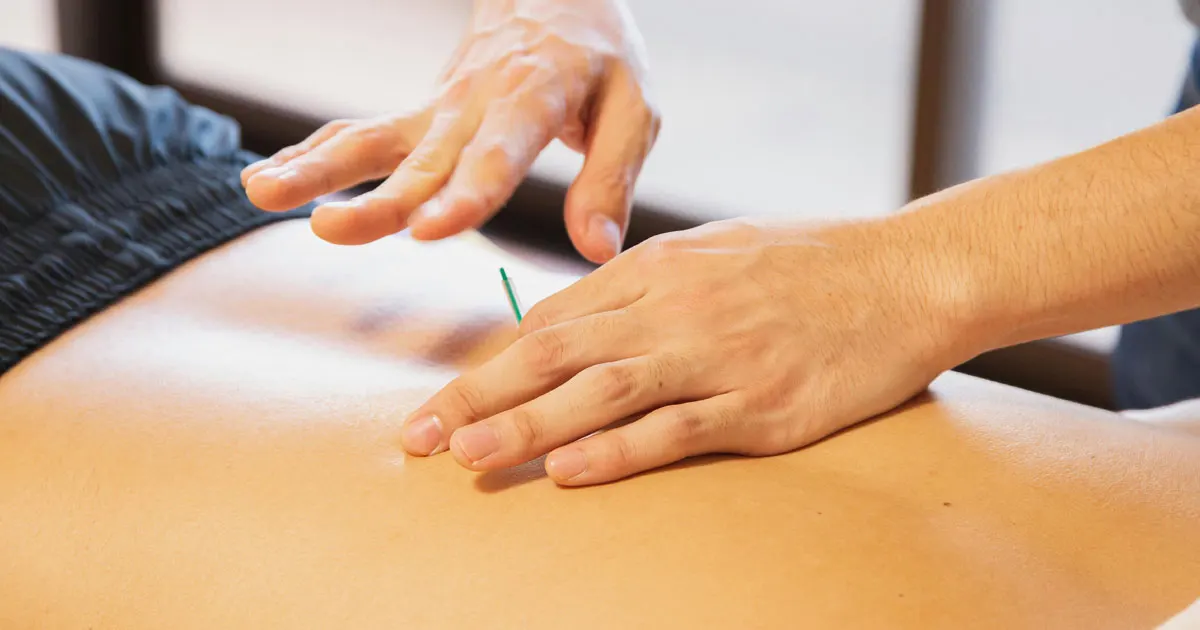If you’ve ever had sciatica, you know it’s a total pain — literally. That annoying, shooting pain from your lower back down your leg can make even chilling on the couch feel like a struggle. Maybe you’ve tried stretching, popping some meds, or just hoping it goes away on its own. But when it sticks around, that’s when dry needling might just be the thing you didn’t know you needed.
At Revolution Rehab, we want to help you get what dry needling for sciatica really is, how it works, and why it could be the key to finally kicking that pain to the curb.
What’s Up with Sciatica and Why Does It Hurt So Much?
Sciatica happens when your sciatic nerve — that big nerve running from your lower back all the way down your leg — gets irritated or pinched. When that nerve is unhappy, it sends pain signals that feel like burning, shooting, or tingling all the way down your leg.
Usually, something like a slipped disc, tight muscles, or even sitting too long in a weird position can put pressure on that nerve. When your muscles get tight, especially around your lower back or hips, they squeeze the nerve and make everything hurt more.
So the trick to feeling better isn’t just about the nerve — it’s about loosening up those tight muscles putting the squeeze on it.
Dry Needling — What’s That All About?
You might have heard about acupuncture, but dry needling is a bit different. It’s a technique where we use super-thin needles to poke right into those tight muscle spots (called trigger points) that are causing trouble. This helps the muscles relax, get more blood flowing, and calm down the pain.
For sciatica, we target the muscles around your lower back, hips, and legs — basically the areas that might be pinching your nerve. When those muscles chill out, your nerve feels way better, and so do you.
What Causes Sciatica That Dry Needling Can Help?
Sciatica can pop up for lots of reasons, but dry needling really shines when muscle tightness or knots are part of the problem. Things like:
- Tight muscles in your lower back and hips
- Herniated discs (dry needling won’t fix the disc itself, but it helps with the muscle tightness around it)
- Piriformis syndrome — when a muscle in your buttocks squeezes the nerve
- Sitting way too much or bad posture
- Old injuries that left your muscles stiff and knotted up
If you’ve tried resting or stretching but the pain is still hanging around, dry needling could be your new best friend.
How Do You Know If Dry Needling Is a Good Fit?
If your pain feels like a burning or shooting sensation down your leg and you notice tight or sore muscles around your lower back or hips, dry needling might be just what you need.
But if you have super intense pain, weakness, numbness, or problems controlling your bladder or bowels, you should see a doctor ASAP — those are serious signs.
At Revolution Rehab, we’ll do a full checkup to figure out what’s going on and see if dry needling fits your treatment plan.
What Happens When You Try Dry Needling?
If you’re nervous about needles, don’t sweat it. The needles are really thin — way skinnier than what you get at the doctor’s office — and they don’t inject anything. We just gently poke into tight muscle spots to help them relax.
You might feel a quick twitch or cramp when the needle hits the right spot, but it usually feels like a fast muscle release. Sometimes, you might feel a bit sore the next day, but most people say it’s worth it for the relief.
Dry needling is usually part of a bigger plan that includes stretching, exercises, and other therapies to help you get better faster.
What Can You Do At Home?
Dry needling helps, but keeping up with some simple habits at home is key. Stretch your hamstrings, hips, and lower back regularly to keep muscles loose and take pressure off the nerve.
Using heat or ice depending on what feels best can calm inflammation or relax muscles.
Try to stay moving — sitting all day is the enemy here. Walking, swimming, or some easy yoga can help without causing more pain.
Also, watch your posture. Little tweaks at work or home can make a big difference over time.
How to Stop Sciatica from Coming Back
No one wants that pain back again, right? So building strength and flexibility is super important. Strong core muscles help support your spine, and flexible hips and legs keep muscles from tightening up again.
Take breaks if you sit a lot, wear comfy shoes, and lift things carefully.
At Revolution Rehab, we’ll help you create a plan to keep you moving pain-free long term.
Why Choose Revolution Rehab?
We get it — sciatica sucks. At Revolution Rehab, we want to help you feel better without relying on meds or surgery unless absolutely needed.
We listen, get what you’re going through, and use treatments like dry needling plus exercise and manual therapy to get you back to your best.
If sciatica is holding you back, don’t just wait for it to go away. Call us or book a consultation today and let’s get you feeling good again.


